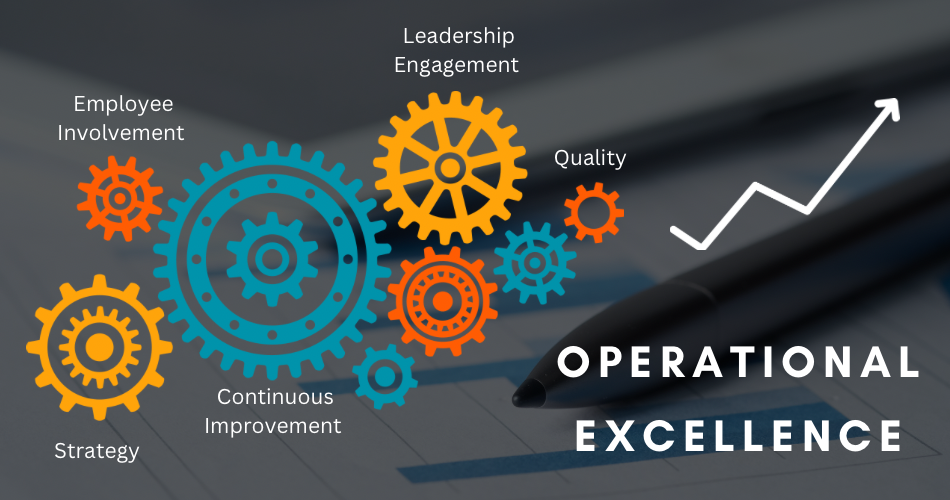In the ever-evolving world of healthcare, organizations are constantly striving to improve their operational efficiency and provide better patient care. Two common approaches to achieving these goals are Continuous Improvement and Operational Excellence. At time you might have gotten confused about what is the difference between Operational Excellence and Continuous Improvement. While both methodologies aim to enhance the performance of healthcare organizations, they are fundamentally different in their approach and philosophy. In this article, we will explore the concepts of operational excellence and continuous improvement in the context of healthcare, highlighting their unique attributes and discussing the importance of striking the right balance between the two for sustainable success.
Continuous Improvement in Healthcare
Continuous Improvement, often associated with methodologies such as Plan-Do-Check-Act (PDCA) cycle, Lean, and Six Sigma, is an ongoing effort to incrementally improve processes, products, or services. In the context of healthcare, Continuous Improvement focuses on identifying areas where improvements can be made, such as reducing operating costs, reducing wait times, improving patient care quality, or enhancing operational efficiency.
It emphasizes ongoing learning, experimentation, and feedback loops to drive progress. Continuous improvement engages all members of the healthcare team, fostering a collaborative environment where individuals contribute their unique perspectives and insights to identify areas for improvement.
Key characteristics of CONTINUOUS IMPROVEMENT in healthcare include:
- Iterative & structured problem-solving: Breaking down complex issues into manageable components and addressing them through small, iterative changes. It involves driving problem-solving initiatives through structured methodology like A3 Problem Solving, DMAIC, etc.
- Data collection and analysis: Collecting and analyzing data to identify trends, root causes, and opportunities for improvement.
- Collaboration and engagement: Encouraging interdisciplinary teamwork and involving frontline staff, patients, and families in improvement efforts.
- Learning culture: Promoting a culture of curiosity, innovation, problem-solving, and learning from both successes and failures.
Operational Excellence in Healthcare
Operational Excellence is a more comprehensive approach to improving organizational performance. Unlike Continuous Improvement, which focuses on incremental enhancements, Operational Excellence aims to create a culture of excellence and efficient operational processes throughout the entire organization. This approach involves understanding the needs and expectations of patients, aligning the organization’s goals with those needs, and continuously striving to surpass those expectations.
By implementing efficient systems and workflows, organizations can enhance patient satisfaction, reduce costs, and ensure the delivery of safe, high-quality care.
Key characteristics of OPERATIONAL EXCELLENCE in healthcare include:
A successful Operational Excellence program in healthcare comprises the following eight components:
(Reference: Continuous Improvement)
- Strategic Direction: Establishing a clear and focused strategic plan that outlines the organization’s objectives and priorities.
- Leadership Engagement: Ensuring that leaders at all levels actively support and promote the Operational Excellence initiatives.
- Process Excellence: Continuously improving processes to reduce waste, enhance quality, and optimize human potential.
- Product/Service Innovation: Developing innovative products and services that meet or exceed patient needs.
- Employee Involvement: Engaging and empowering employees to participate in improvement efforts and contribute to the organization’s success.
- Commitment to Quality: Upholding high-quality standards in all aspects of the organization’s operations.
- Superior Safety: Prioritizing patient and employee safety and implementing measures to minimize risks.
- Commitment to Surpassing Patient Expectations: Striving to consistently exceed the needs and expectations of patients.
Comparing OpEx and CI in Healthcare
While both Operational Excellence and Continuous Improvement aim to enhance healthcare organizations’ performance, they differ in several aspects:
- Scope: Continuous Improvement focuses on incremental improvements in specific areas, whereas Operational Excellence encompasses the entire organization and its operations.
- Goal: Continuous Improvement aims to achieve better results through constant enhancements, while Operational Excellence strives to create a culture of excellence and surpass patient expectations.
- Success Measures:
- Continuous Improvement – Cost, Lead Time, Quality
- Operational Excellence – Revenue, Profitability, Growth, Safety, Retention, etc.
- Approach: Continuous Improvement involves a cyclical process of identifying, analyzing, implementing, evaluating, and adjusting improvements. In contrast, Operational Excellence involves setting strategic goals, engaging leadership, and developing a comprehensive plan to achieve excellence across the organization.
- Long-term Impact: Continuous Improvement efforts may yield temporary improvements, while Operational Excellence initiatives can lead to sustainable growth and a competitive advantage in the long run.
Striking the Balance
To maximize the impact on patient care, healthcare organizations must strike a balance between operational excellence and continuous improvement. OpEx provides a solid foundation by optimizing processes and ensuring consistency, while CI fuels innovation and drives ongoing enhancements. When these two approaches are harmonized, organizations can achieve sustainable improvement and create a culture of excellence.
